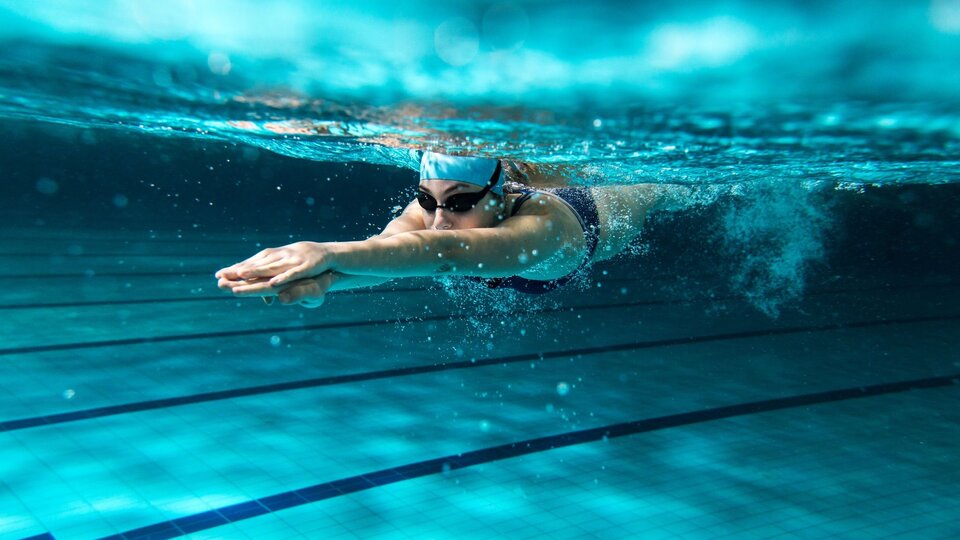Swimming into Your Fitness Routine
The Ultimate Summer Workout
Shake up your fitness routine by incorporating swimming into your summer workout. Imagine cooling off in the refreshing water after a full-body workout that builds muscle and endurance. Not only is swimming a great way to stay cool during the hot summer months, but it’s also an effective way to improve your overall fitness.
Why Swimming?
The Full-Body Workout
Swimming isn’t just a way to cool off – it’s a workout powerhouse. When you swim, you engage almost every muscle in your body, from your arms and legs to your core and back. This full-body engagement means you burn many calories and improve your overall fitness.
Low-Impact, High-Return Workout
Swimming is also low-impact, making it an excellent option for anyone recovering from an injury or looking to add variety to their high-impact workouts. The resistance of the water forces your heart and lungs to work harder, boosting your aerobic capacity and endurance.
Swimming and Muscle Building
The Resistance Training
Contrary to popular belief, swimming isn’t just for endurance – it can help you build muscle. The resistance of the water provides a form of resistance training similar to lifting weights. When you swim, your muscles push against the water, which helps stimulate them.
Incorporating Different Strokes
To maximize muscle gains, incorporate different strokes into your routine. The freestyle (or front crawl) is great for overall conditioning, while the breaststroke targets your chest and triceps. The backstroke works wonders for your back and shoulders, and the butterfly is a killer for your core and upper body.
Making the Most of Your Pool Time
Starting Your Swimming Routine
To get started, aim for at least two to three swimming sessions per week. Begin with shorter sessions, around 20-30 minutes, and gradually increase the duration as your stamina improves. Mix your workouts with interval training, alternating between high-intensity sprints and more moderate-paced laps. This keeps things interesting, maximizes calorie burn, and boosts your metabolism.
Warm-up and Cool-down
Don’t forget to warm up before you dive in and cool down after your swim. Simple stretches and light swimming can help prevent injury and reduce muscle soreness.
Swimming Workouts for Every Level
Beginner Workout
Warm-up: 5 minutes of easy swimming
Freestyle: 4 x 25 meters (rest 30 seconds between laps)
Breaststroke: 2 x 25 meters (rest 30 seconds between laps)
Cool-down: 5 minutes of easy swimming
Intermediate Workout
Warm-up: 10 minutes of easy swimming
Freestyle: 4 x 50 meters (rest 20 seconds between laps)
Backstroke: 4 x 25 meters (rest 20 seconds between laps)
Interval Training: 6 x 25 meters sprint, 25 meters easy swim (no rest between sets)
Cool-down: 10 minutes of easy swimming
Advanced Workout
Warm-up: 15 minutes of easy swimming
Butterfly: 4 x 25 meters (rest 15 seconds between laps)
Freestyle: 4 x 100 meters (rest 20 seconds between laps)
Breaststroke: 4 x 50 meters (rest 20 seconds between laps)
Interval Training: 10 x 50 meters sprint, 50 meters easy swim (no rest between sets)
Cool-down: 15 minutes of easy swimming
Conclusion
Incorporating swimming into your fitness routine is a fantastic way to stay fit and cool during the summer. It offers a full-body workout, improves cardiovascular health, and builds muscle without the strain of high-impact exercises. So, head to the pool next time you hit a fitness plateau or just need a break from the gym. Dive in, splash, and watch your fitness soar this summer!
FAQs
Q: Is swimming suitable for beginners?
A: Absolutely! Swimming is a low-impact workout that’s easy on the joints, making it an excellent option for anyone looking to start a new fitness routine.
Q: Can swimming help me build muscle?
A: Yes! Swimming provides a form of resistance training that can help you build muscle, especially in your upper body and core.
Q: How often should I swim to see results?
A: Aim for at least two to three swimming sessions per week, and gradually increase the duration and intensity as your stamina improves.
Q: Can swimming help me improve my cardiovascular health?
A: Yes! Swimming is an excellent cardiovascular workout that can help improve your heart and lung function, boosting your aerobic capacity and endurance.
Q: Do I need to know how to swim to start a swimming workout?
A: No! Many gyms and community centers offer swimming lessons for beginners. You can also start with assisted swimming or water aerobics classes.
Recommended Products:
-

Primal Harvest Restore for Gut Health, Primal Gut Restore w/POSTbiotics, PREbiotics and PRObiotics for Women and Men, 60 CT – Digestion, Colon Cleanse, Immunity Support – Helps Leaky Gut Repair
$49.95 Buy Now -
Sale!

Collagen Peptides Powder – Hydrolyzed Collagen, Keto Safe – 16.08oz – Multi Type 1, 2, and 3 (Grass Fed Bovine Source)(Colageno Hidrolizado) Collagen Supplements for Women and Men by Double Wood
Original price was: $24.95.$22.95Current price is: $22.95. Buy Now -
Sale!

Hydroxycut Original – 72 Rapid-Release Capsules – 200 mg Caffeine – Boost Metabolism, Burn Calories, Increase Energy – for Women & Men
Original price was: $29.99.$19.59Current price is: $19.59. Buy Now



